PCB Design: How to Create a Printed Circuit Board From Scratch
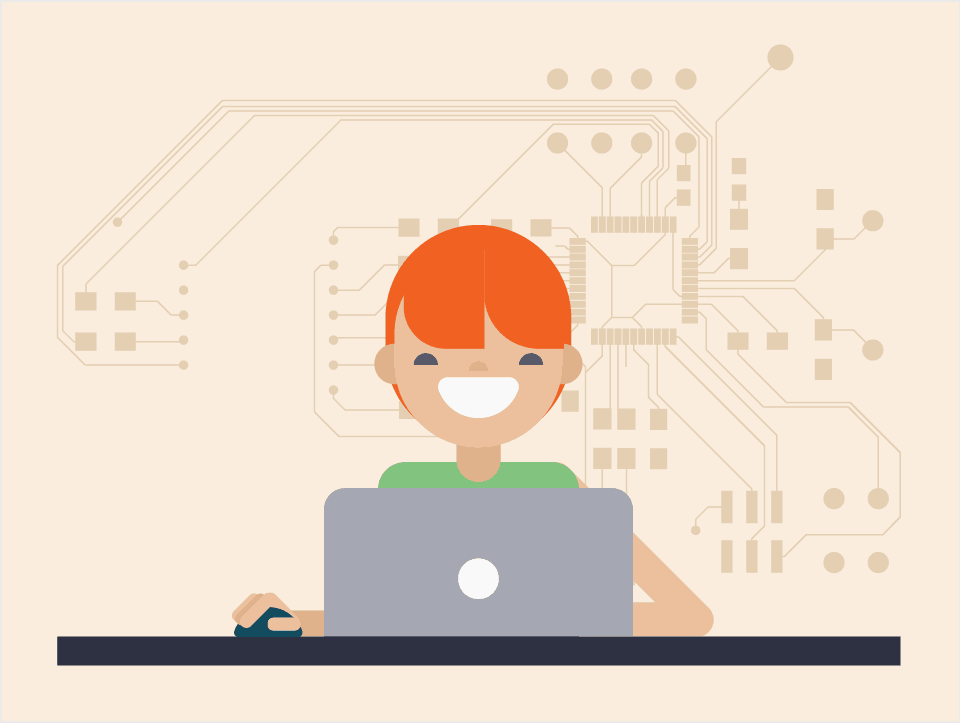
To create a Printed Circuit Board (PCB), you need to draw holes, pads, and wires for your circuit. This skill is called PCB design and is highly useful.
When you’re done, send the design to a manufacturer or you etch it yourself.
Sounds hard? Don’t worry, there are many free tools out there that will help you do this.
Below I’ll give you an overview of what you need to do.
Bonus: Download a free eBook that will show you step-by-step how to make your first printed circuit board.
Step 1: Create Or Find A Circuit Diagram
Before you start drawing wires and stuff, you need to know what circuit you want to build. So you need a circuit diagram.
You can either find one that someone else has made, or you can design your own from scratch.
I recommend starting with something simple. Like a blinking LED.
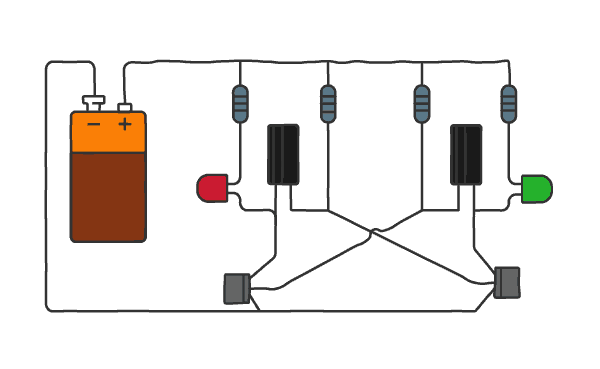
Once you have your circuit diagram, move on to step 2.
Step 2: Draw Your Schematics
First, you need to install a PCB design software.
I highly recommend KiCad for making your PCB. It’s free and it’s really good. I’ve also created a step-by-step KiCad tutorial for beginners.
Create a new project. Then draw the schematics from the circuit diagram you found in Step 1.
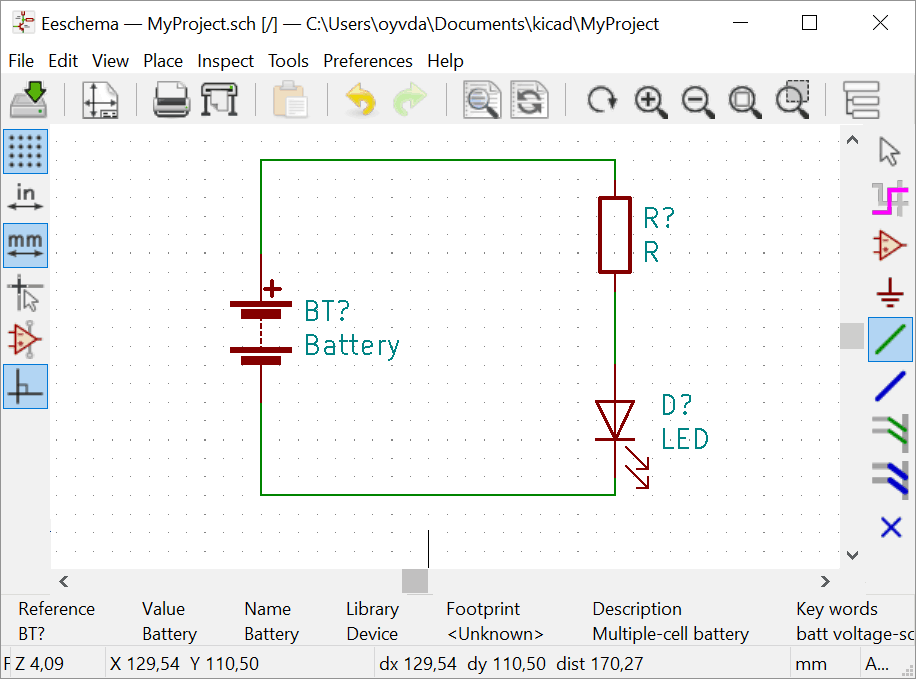
When you think you’re finished, run the Electrical Rules Checker (ERC) to see if you’ve made any typical errors.
Step 3: Design Your Board Layout
Now it’s time to draw the board. You need to transfer your schematic diagram into a drawing of your printed circuit board.
This isn’t as hard as it might sound. Because the software will compare what you are drawing to the schematics file. And it will help you create the same connections.
An important decision here is what footprint you should choose for the components. Through-hole or surface mount?
Through-hole components are the easiest to solder. I recommend through-hole for beginners. Surface mount components are smaller, so they take up much less space. But smaller also means it could be harder to solder. That said, it just takes a bit of practice to get used to surface mount components. So if your up for the challenge, then go for it.
Take your time, and make sure it looks good 😉 Follow the design guidelines for drawing circuit boards.
When you’re done, run the Design Rules Checker (DRC) to see if you’ve made any errors.
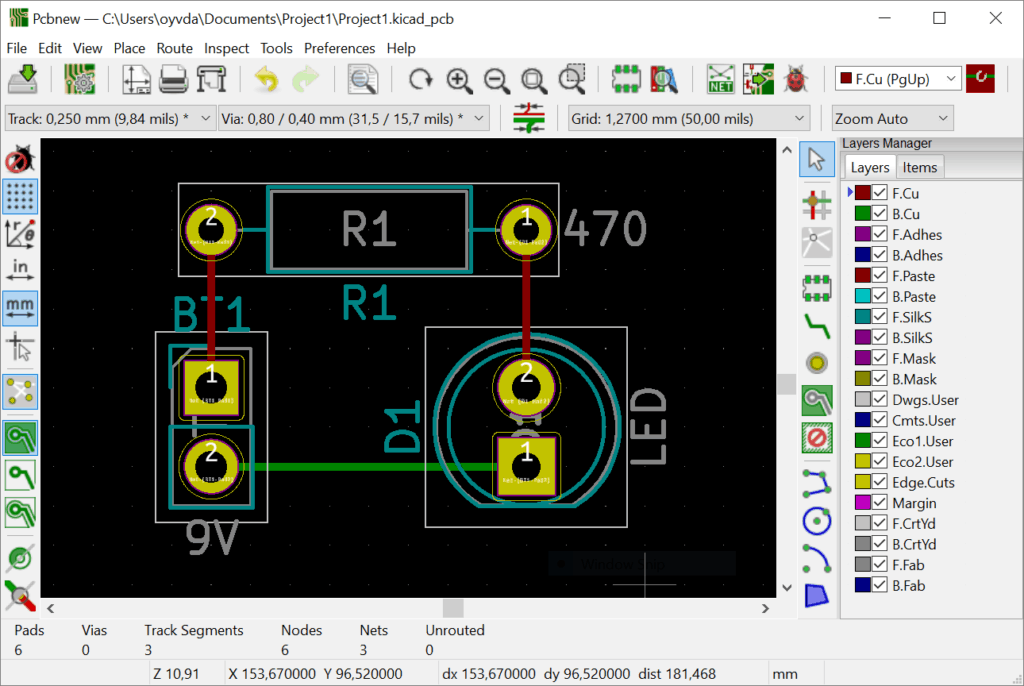
Step 4: Get Your PCB Made
When you’re finished drawing your PCB design, you need to get the design made. You could etch your PCB at home, but my preferred way is to just order a PCB from one of the many PCB manufacturers out there.
It’s really not expensive. For example, it’s not uncommon to see offers of 5 copies of your board for less than $5 USD! And you don’t have to mess around with chemicals on your own.
These are some of my favorites:
The classic way of sending a board layout to a manufacturer is by creating Gerber files from your design. But some (ex. OSH Parks) also accept KiCad files directly so that you don’t have to do any conversion.
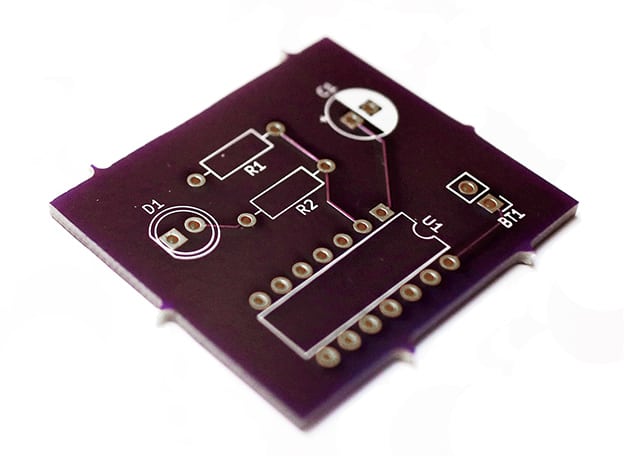
Step 5: Order Components
It usually takes a bit of time before your PCB is ready. So while you wait, make sure you have all the components you need. There’s nothing worse than to receive a fresh PCB, just to realize you are missing some key components!
I’ve put together a list of shops where you can buy electronic components online. The shops listed I’ve either used myself, or I know someone who has used them.
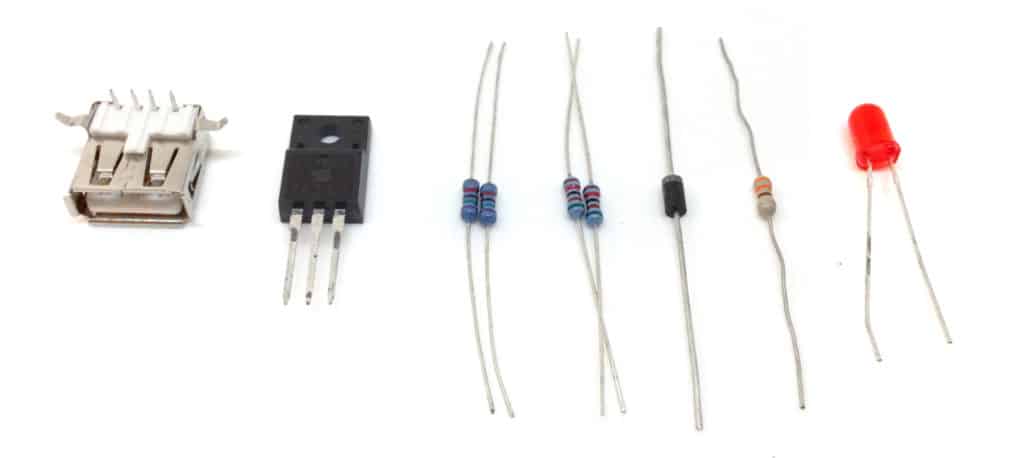
Step 6: PCB Assembly – Soldering the Components to the Board
You have your circuit board, fresh out of the printer. You have ordered and received the component. Now it’s time for the most exciting part – PCB upbringing!
Prepare your workbench and get your soldering tools out. Lay out the components and the PCB on your workbench.
Have your computer with the PCB Design close by so that you can check the orientation and value of components if needed. If that’s not possible, print out the schematic with values and the board layout.
Make yourself a cup of coffee, then get start soldering!
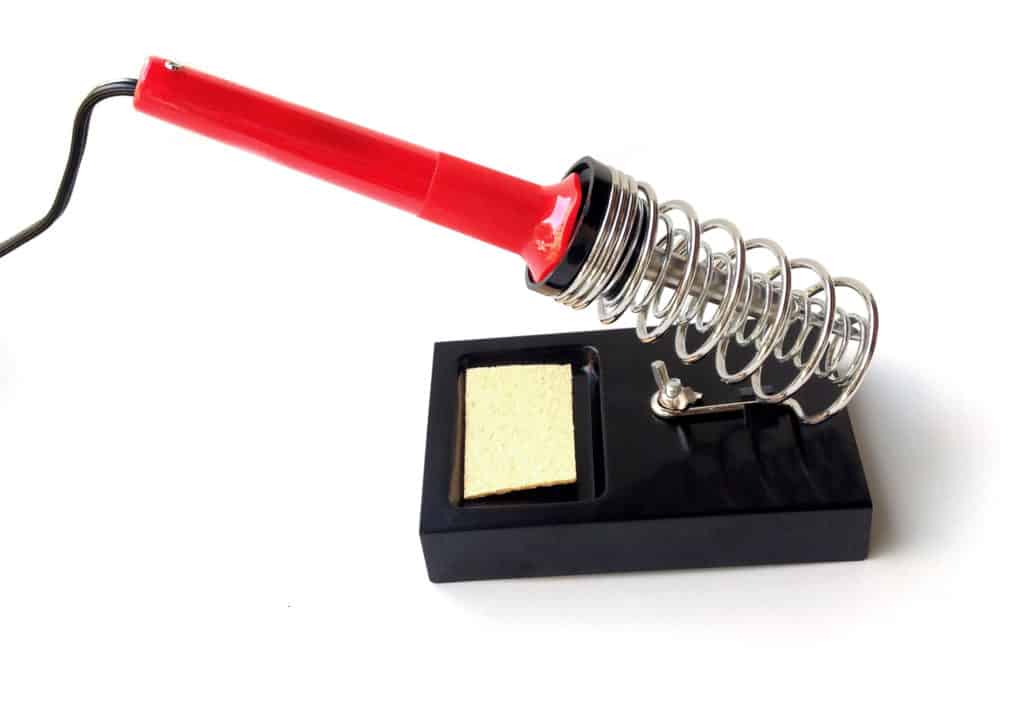
Questions?
What are your biggest concerns, doubts, or questions around PCB design? Is there something stopping you from making your first PCB? Let me know in the comment field below!
